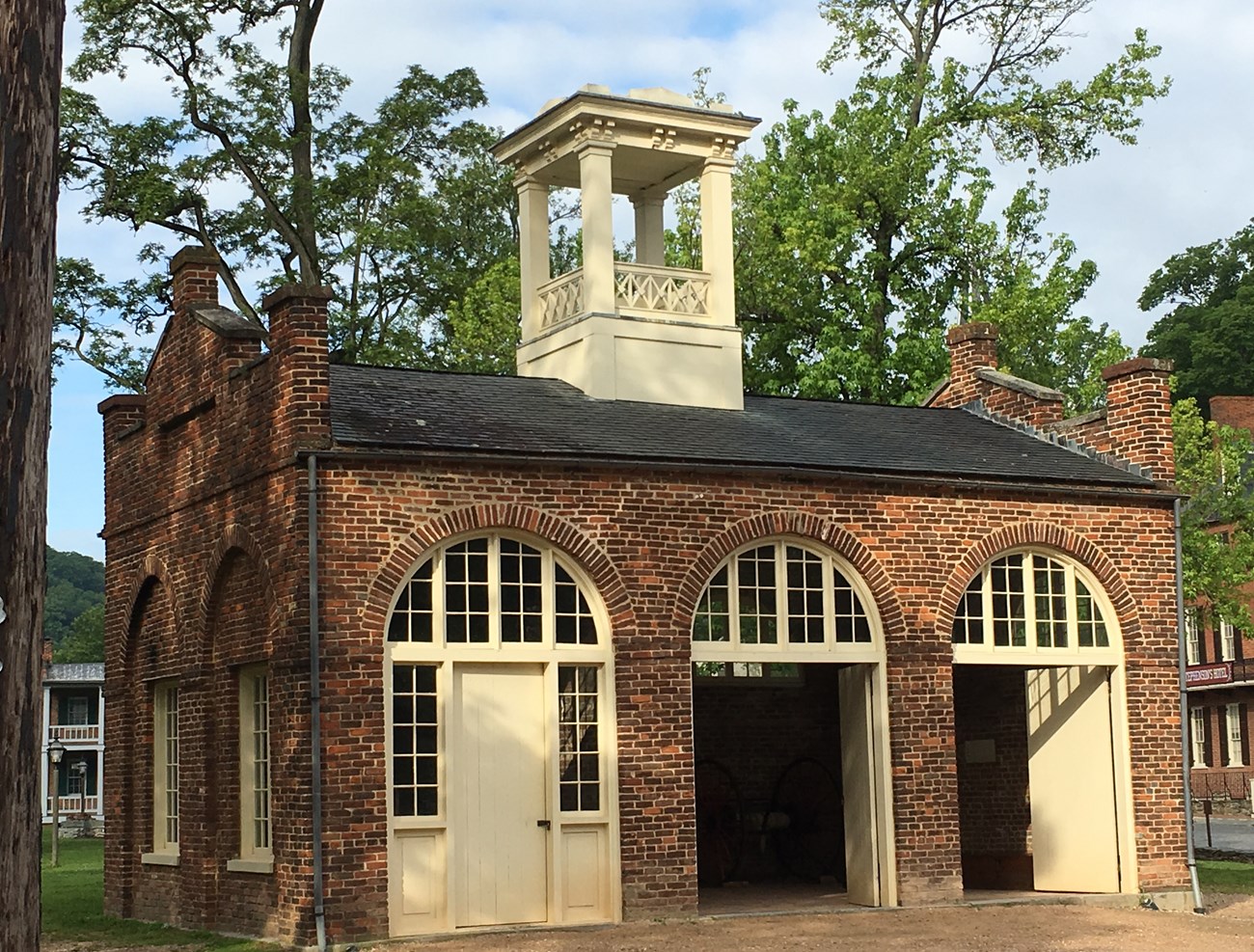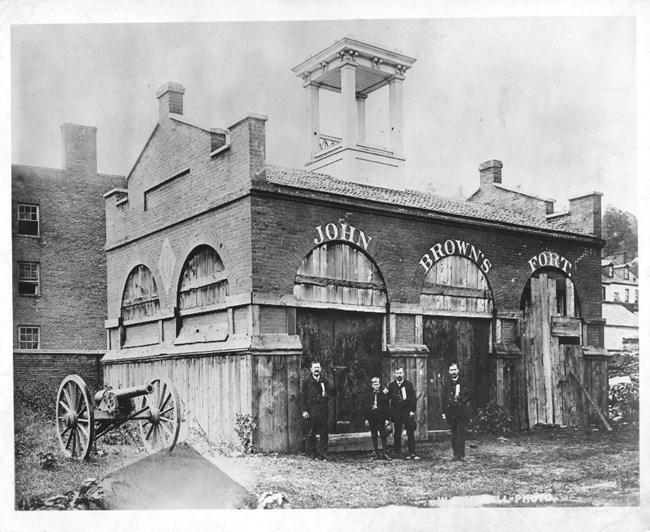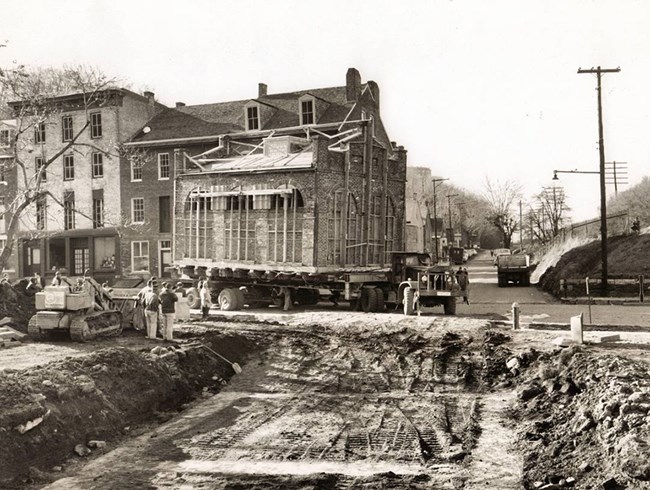
NPS Photo/Autumn Cook A visit to John Brown's Fort is more than seeing the building where John Brown and several of his followers barricaded themselves in 1859. The building has a complex history that begins in 1848, continues through to today, and includes four locations in Harpers Ferry and one in Chicago. We invite you to visit this famous Harpers Ferry building and discover what it means to you.
Visit John Brown's FortTo access John Brown's Fort from the Lower Town shuttle bus stop, walk along the sidewalks of Shenandoah Street toward The Point. John Brown's Fort is the last building on the right side of the street. It is open to the public during park hours. History of John Brown's FortThe structure we now call John Brown’s Fort was erected in 1848 as the Armory’s fire engine and guard house. The building was described in a June 30, 1848, Armory report as “an engine and guard-house, 35½ x 24 feet, one story brick, covered with slate, and having copper gutters and down spouts, has been constructed, and is now occupied.” It was in this building that John Brown and several of his followers barricaded themselves during the final hours of their ill-fated raid of October 16, 17, and 18, 1859. 
Library of Congress Prints and Photographs Division 
Harpers Ferry NHP Historic Photo Collection, Catalog #HF-00220 After John Brown's RaidDuring the Civil War, the John Brown Fort was used as a prison, a powder magazine, and perhaps a quartermaster supply house. Union troops admired the fort as they passed while Confederate troops cursed it. Many troops broke pieces of brick and wood off the fort as souvenirs. It was the only Armory building to escape destruction during the Civil War. In 1891, the fort was sold, dismantled and transported to Chicago where it was displayed a short distance from The World’s Columbian Exposition. The building, attracting only 11 visitors in ten days, was closed, dismantled again and left on a vacant lot. How did the building return from Chicago?In 1894, Washington, D.C. journalist Kate Field, who had a keen interest in preserving memorabilia of John Brown, spearheaded a campaign to return the fort to Harpers Ferry. Local resident Alexander Murphy made five acres available to Miss Field for the cost of $1, and the Baltimore & Ohio Railroad offered to ship the disassembled fort to Harpers Ferry free of charge. In 1895, John Brown’s Fort was rebuilt on the Murphy Farm about three miles outside of town on a bluff overlooking the Shenandoah River. 
Photo from Survey HABS WV-21-5; Historic American Buildings Survey (Library of Congress) 
Harpers Ferry NHP Historic Photo Collection, Catalog #NHF-3155 John Brown's Fort at Storer CollegeIn 1903, Storer College began their own fundraising drive to acquire the structure. In 1909, on the occasion of the 50th Anniversary of John Brown’s Raid, the building was purchased and moved to the Storer College campus on Camp Hill in Harpers Ferry. It was used as a museum and many students were required to give tours of the museum to strengthen their public speaking skills. After Storer CollegeAcquired by the National Park Service in 1960, the building was moved back to the Lower Town in 1968. Because the fort’s original site was covered with a railroad embankment in 1894, the building was placed about 150 feet east of its original location. |
Last updated: November 1, 2022
